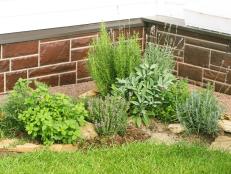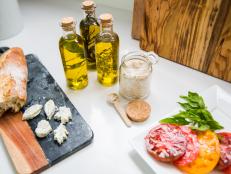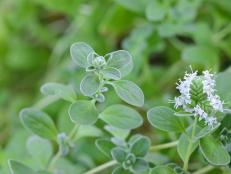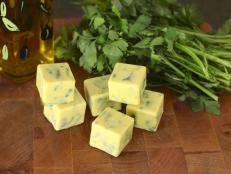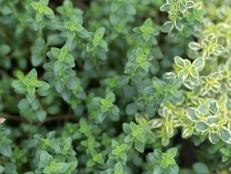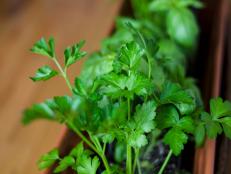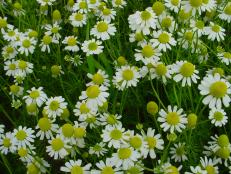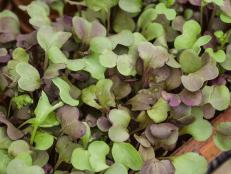Book Review: Herbal Cooking for Self-Care
In Recipes From The Herbalist’s Kitchen, discover how herbs can help create meals that are not only delicious, but help you live your best life.


Author and Herbalist Brittany Wood Nickerson
When you sticky-note nearly every page of a book, do the sticky notes become meaningless? This is the question I’m pondering as I look at my copy of Recipes From The Herbalist’s Kitchen, a new book from Storey Publishing by herbalist and Thyme Herbal creator Brittany Wood Nickerson. Every page features a recipe I want to dive into based purely on promised taste and creative use of ingredients — and it’s a welcome bonus that those ingredients promote good health. As a devoted edible gardener, I love how this cookbook shows innovative ways to use plants in cooking while also making old practices feel new again. The book’s beautiful photography and Brittany’s insightful explanations also make the book a new favorite for my collection.
In my first week of perusing the book, I made Baked Eggs With Parsley Pesto, Lavender Fizz, Apricot-Cashew Bars With Coconut and Rosemary, Herbed Flax Seed Crackers and Lactofermented Dilly Beans — or, I should say, I started the Dilly Beans and Lavender Fizz, as these recipes, along with others in the book, delve into home fermentation, which takes a little time and patience to achieve. (For those wondering, the Dilly Beans rival any pickled version I’ve tried; in fact, I like them better.) Do I sound a tad too excited about this book? Maybe I have a little crush on it and its author, one I’ll indulge, and you should too — just read on for my conversation with Brittany about the book, herbs, and the role of self-care in today’s world.
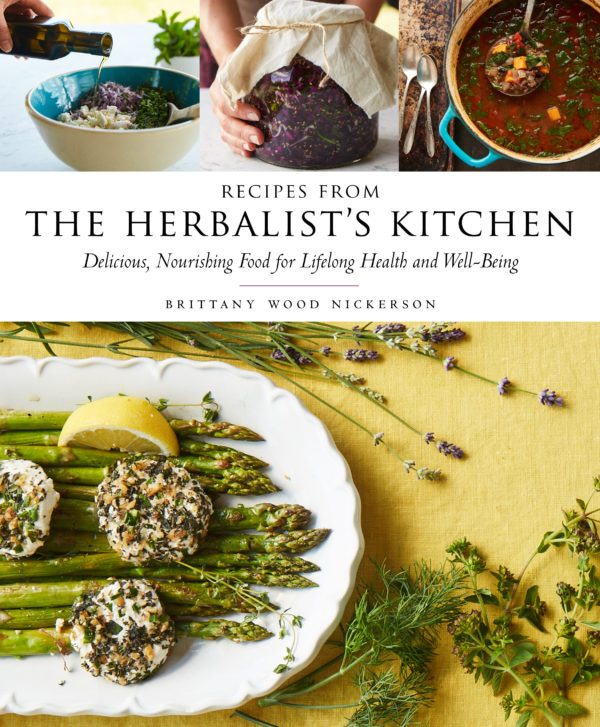
I love the subhead “Kitchen Medicine” in your introduction. Rather than simply thinking of herbs as medicine, your approach seems to be about thinking of meals as medicine, and herbs as essential ingredients in healthy meals. Can you sum up how this approach to herbalism is different, and perhaps more accessible, for the average daily cook/eater?
Herbs are a part of culinary traditions from around the world for reasons far beyond flavor. Culinary herbs support digestion and absorption of nutrients and help prevent food borne illnesses. Traditions surrounding cooking with herbs are embedded in the herb's medicinal properties. This means that anyone who has ever cooked with herbs (or even just sprinkled black pepper on their eggs in a diner!) has participated in the tradition of cooking medicinally. The primary project of Recipes from the Herbalist's Kitchen is to help teach people why we cook with herbs so that they can more fully understand the blurry line between food and medicine. The concept of "Kitchen Medicine" transcends the idea that we should cook with and eat herbs simply because they are "good for us" – but rather that we should employ them to carry out a certain medical intention that can support overall health in the body. The concept is rooted in a very holistic understanding of health, vitality and larger patterns of wellness. My hope is that learning the medicinal reasoning behind traditional (and not so traditional!) herb and food combinations can deeply empower the home, professional or aspiring cook.
What herbs do you think everyone interested in healthy, medicinal meals should grow at home? For those already growing the basics, what are a few less-common herbs everyone should plant?
I always recommend people focus on growing the culinary herbs that are better used fresh rather than dried. For example, I prefer fresh basil, cilantro, dill and parsley over dried. Focusing on a small kitchen garden or window box with a few of these is bound to liven up your cooking. I also enjoy having a rosemary plant. Rosemary does not overwinter in cold climates, so I pot mine up and bring it in the house where I can enjoy its beauty, fragrance, and flavor all through the winter months.
Beyond strictly culinary herbs, I love growing calendula (a medicinal herb in the marigold family). Calendula is commonly used for external skin care preparations, and internally it supports the eliminatory organs. It is an easy to grow annual that will self-seed itself in the garden year after year. It has beautiful yellow and orange flowers that bloom all the way through September. It makes a great cut flower and you use the edible petals in your cooking. I love to garnish cakes, salads and other dishes with the vibrant orange and yellow petals. Just last week I made a roasted beet dish with feta cheese and calendula petals – it was beautiful.
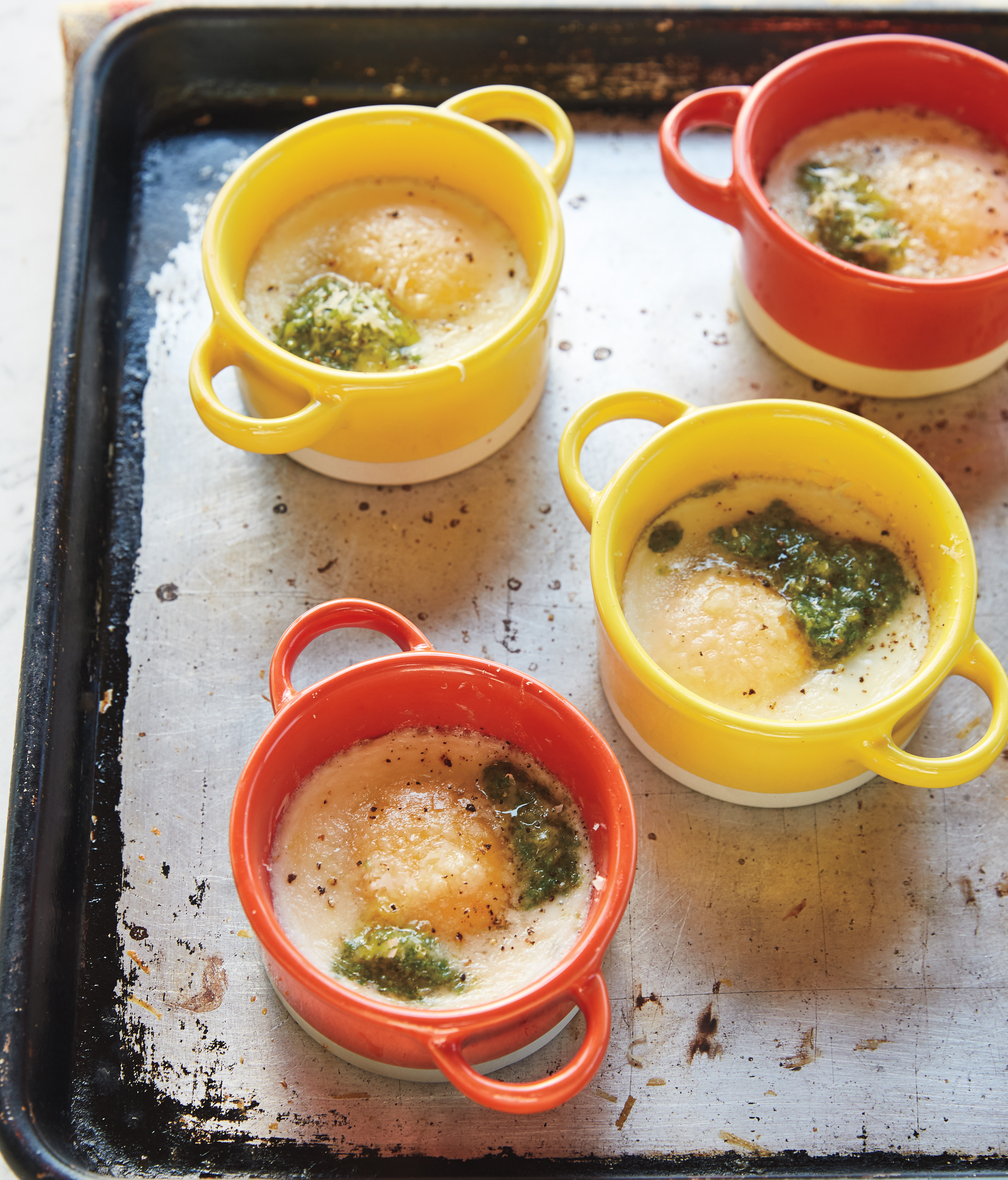
Baked Eggs With Parsley Pesto. Photography by Keller+Keller photography, from Recipes from the Herbalist’s Kitchen by Brittany Wood Nickerson, used with permission from Storey Publishing.
The term “self-care” seems to be growing in popularity and reach. What does “self-care” mean to you and how can people start incorporating it into their daily life and mindset?
For me, self-care is the practice of prioritizing caring for one's self. It involves two aspects – the logistical caring of the body (for example taking a shower or eating a meal), as well as caring for the spirit and one's emotional world. In many cases, the two can overlap and I believe that is the most productive and sustainable type of self-care. In Recipes from the Herbalist's Kitchen, I talk extensively about the ways that cooking can become a nourishing component of care for both self and others. And it beautifully illustrates the overlap between how we care for our physical and emotional body. I dive into this deeply in the introduction to the Nourish chapter, "Our relationship with food gives us access to our inner landscape. There are countless moments in food production, harvesting, cooking, and eating that ask for reflection, that engage our senses, our instincts and our relationship with our deep primal nature."
I loved reading about the five taste categories: sweet, salty, sour, pungent and bitter. Most of us grew up learning about the four food groups and creating a balanced plate. Would our meals be better off health-wise if we thought about including the five tastes instead? And what tastes are most of us missing?
What most dietary systems, trends, philosophies, etc. overlook is the importance of digestion. They focus on what foods to eat, but not how well those foods are digested and how many nutrients we are able to absorb and utilize from them. What the five tastes help us understand is how flavors affect our physiology. When we combine highly nutritious, but harder to digest foods like grains, legumes, dairy or meat with metabolically stimulating pungent and bitter tasting herbs such as rosemary, thyme, sage, mint, etc. we support our body's ability to absorb all those good nutrients.
The flavor that is most absent from the average American diet is bitter. Bitter is the most metabolically active of all the flavors. We have taste buds on our tongue that only pick up and respond to the bitter flavor. This taste bud reflux stimulates the entire digestive process including the release of digestive acids and enzymes in the stomach, pancreas and intestines and bile from the liver and gallbladder. It also stimulates peristalsis, the muscular action that moves food through the GI tract. We do not need to eat a lot of bitter foods, just a taste is most important. That is why bitter tasting foods are often reserved for small courses, side dishes or herbal accents to heavier foods. Examples include a salad of bitter greens or a bitter cocktail before a meal, rosemary to season chicken or basil on a heavy pasta dish. Pesto, gremolata and other herbal condiments often have a bitter flavor alongside other salty or pungent accents.
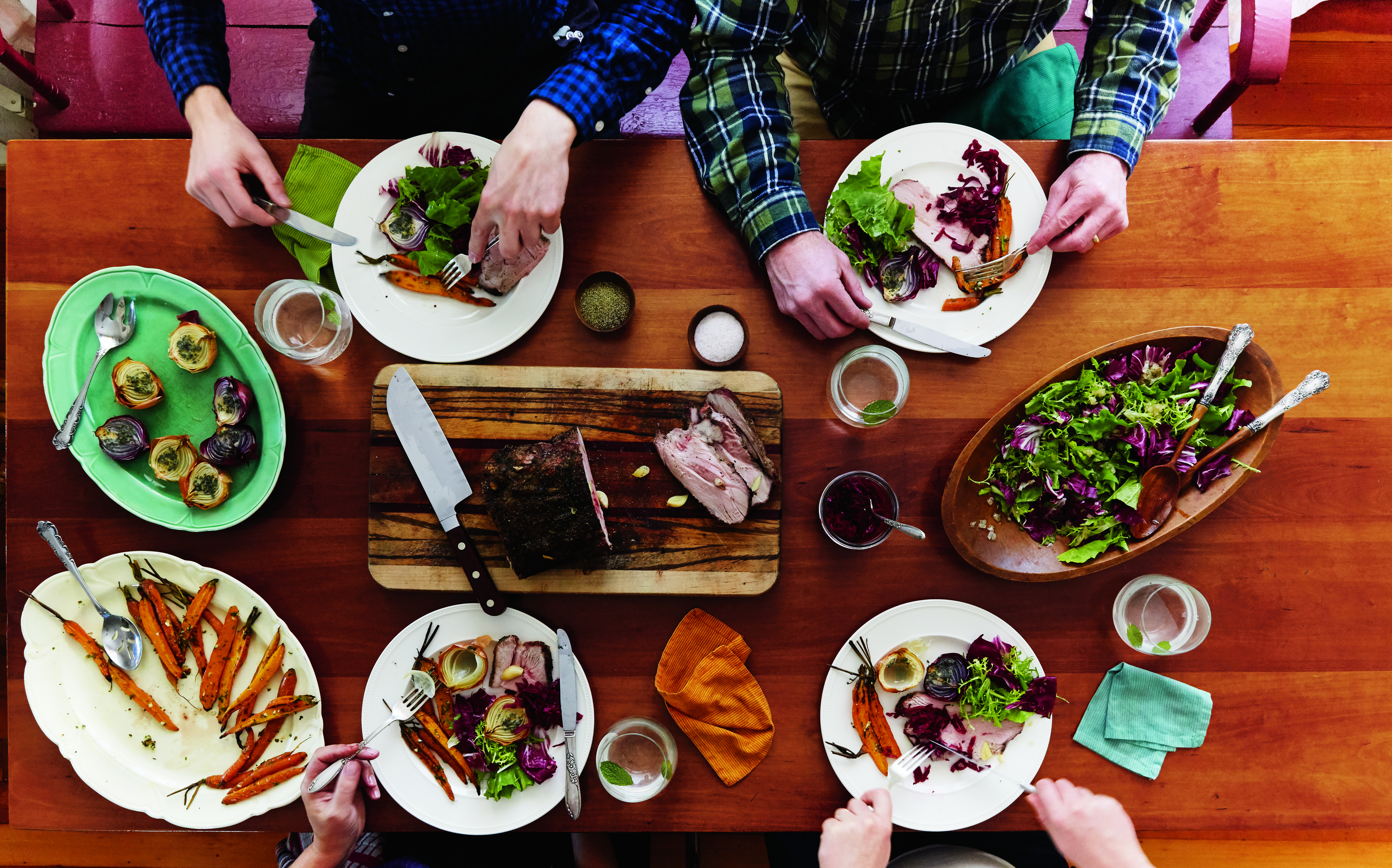
Photography by Keller+Keller photography, from Recipes from the Herbalist’s Kitchen by Brittany Wood Nickerson, used with permission from Storey Publishing.
Fall is on the horizon. What are some of your favorite recipes from the book for the fall season, and why?
In the chapter Adapt, Living with the Seasons, I outline the importance of nourishing fall foods. Fall is special because it transitions us from the warmth of summer to the colder, darker winter months. It is a very important time to optimally nourish the system – according to Chinese medicine, we spend the summer gathering warmth from the sun and we want to preserve it through the fall rather than squandering it away.
With this in mind, fall is a great time to turn toward warm, cooked foods that are deeply nourishing. Breakfast for Champions, poached eggs in miso broth with herbs and vegetables, is a great way to start the day on a crisp fall morning. I also love Chicories with Warm Vinaigrette, a salad of bitter greens from the chicory family dressed with a warm dressing of shallots, white wine and olive oil. I look forward to root vegetables all year long, so I dive right into those by enjoying recipes like Baked Sweet Potato with Sesame Peanut Aioli and Root Vegetable Pie. At the same time that I am turning inward and enjoying warmer, cooked foods, I cling to the last fresh herbs in the garden, squirreling away herbal butters, pestos and infused vinegars (all techniques outlined in the Awaken chapter) for use throughout the winter!






